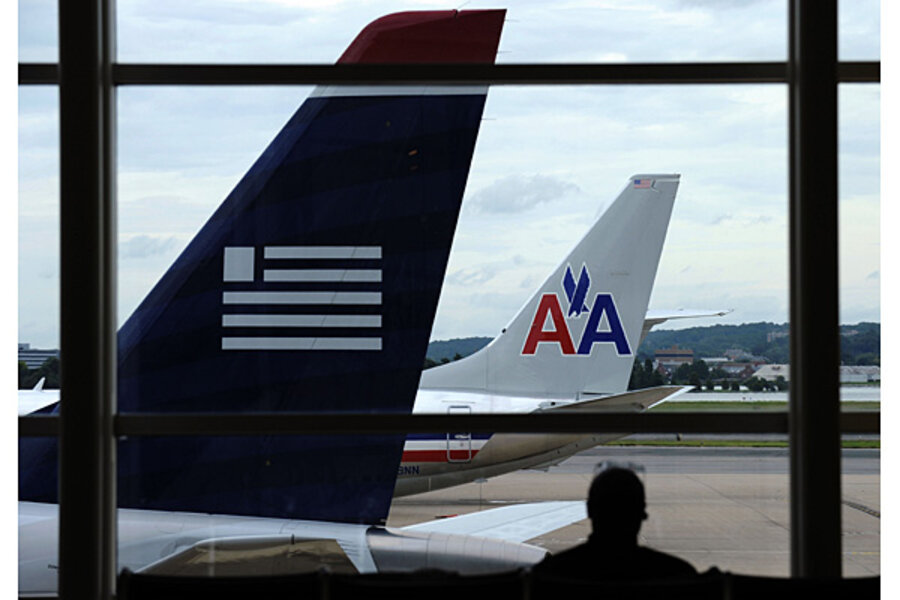American Airlines latest to tweak frequent flyer program; 110 million affected
Loading...
Newly-merged American Airlines and US Airways are making big changes to their frequent flyer programs, parent company American Airlines Group announced Tuesday. Following in the steps of several other major US carriers over the past year or so, the company will reduce the number of points needed for certain flights but increase them for others. Like Delta and United earlier this year, it will also introduce a system of tiered point-redemption categories, making the process of redeeming points for a ticket more complex.
AAdvantage members, for example, will be able to get one-way tickets for 20,000 points during the majority of the year; those tickets used to cost 25,000 points. But on the busiest travel days, a one-way ticket will cost a whopping 50,000 points. The airline also made changes to its luggage policies, meaning, among other things, that economy class passengers traveling on full fare tickets will no longer receive a free checked bag. The changes will affect approximately 110 million passengers, according to the company.
There were earlier hints that changes were coming. In March, American Airlines and JetBlue ended an agreement that allowed passengers enrolled in one airline's frequent-flyer program to earn miles on certain flights taken on the other carrier. The new policy went into effect April 1.
The effect of that change is fairly narrow. American Airlines customers could previously earn miles when flying select JetBlue routes to New York and Boston to connect to AA's international flights out of those cites. But AA's merger with US Airways expanded its presence in the Northeast, thus ending its need to partner with JetBlue.
But both announcements come at a time when airlines and the travel industry at large are tightening up restrictions on frequent-flier miles and other types of accrued loyalty points, especially for their higher-end offerings. Late last year, both Delta and United Airlines announced steep increases for the number of frequent-flier miles needed to book first- and business-class cabin seats on international flights. In early March, Delta also announced that it will completely revamp its SkyMiles program in 2015, making points accrued more dependent on the cost of a ticket rather than miles flown.
And redeeming hotel loyalty points just got harder, too: Hotel chains Hilton, Marriott, Starwood, and InterContinental Hotels restructured their points programs last year, raising the number of points needed to book free rooms at some of their nicer hotels.
More people are traveling
Why the squeeze? Simply, airlines and hotels are requiring more points "because they can," says Gary Leff, author of the blog "View from the Wing" and the founder of flyertalk.com, an online community for frequent fliers.
He notes that as the economy has improved over the past couple of years, more people are traveling and flights are fuller, which means airlines and hotels don't need to work as hard to fill unreserved spaces. On average, 84 percent of airline seats are filled with paying customers (up from 82 percent in 2009). The average price of a plane ticket has risen 12 percent over the past five years, according to an Associated Press analysis of data from the Airlines Reporting Corp. For the hotel industry, room occupancy increased 2.4 percent year over year from January 2013 to January 2014 and the average daily rate for a room rose 3 percent, according to HotelNewsNow.
As prices rise, it should be no surprise that the number of points needed would rise along with them.
"Members have accumulated large quantities of miles that can be redeemed only at prices and on terms set by the airline, and increasing the [points] reduces the costs associated with redeeming miles. It improves [the airline's] bottom line, Mr. Leff says. "More miles are chasing fewer seats, and adjusting the award charts is one way for airlines to balance that."
Making your points count
There are still ways to get the most out of loyalty points in the current landscape. Since points programs have the potential to change annually, many travel experts recommend using your points now, instead of stockpiling them for later. Otherwise, you could miss redeeming points at their peak value.
Leff also suggests avoiding mileage rewards credit cards, particularly if you mostly book economy class domestic flights. Instead, "consider a strong cash back card like the 2 percent Fidelity Investment Rewards American Express," he says. "You probably won't do better than 2 percent back using miles for domestic travel, and this way you don't have to worry about frequent-flier award availability – you just buy your ticket with the cash you earn."
The good news is that airlines and hotels have a vested interest in keeping their most loyal customers happy. Some of the previously mentioned hotel chains, for instance, made it easier to redeem points for cheaper rooms while simultaneously increasing point values for the pricier ones. Delta's reworked SkyMiles program will include five different pricing tiers to give members more redeemable flight options, and Leff thinks that type of price gradation could become standard.
"It's good because there can be better availability at a price passengers are willing to pay, but bad because there are less of those really great deals," he says.








